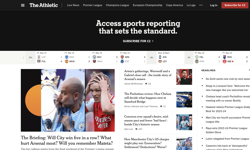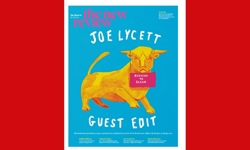Newspapers, mass-market and niche publishers all gathered at the recent Mobile Media Strategies conference organised by The Media Briefing to share experiences and pick up tips on how to integrate mobile into their publishing strategy.
Why publishers can’t ignore mobile
The number of smartphones across Europe is expected to grow from 100m today to 160m in four years’ time. Just in the UK, the total installed iOS base, including iPod touch, iPhone and iPad is over 12m, and is expected to grow to 18m in three years, so the Apple app store is no longer just the preserve of the tech elite. Whilst Android is growing its share of smartphones, the paid app market is still dominated by Apple with over 80% share of revenues. But as mobile internet coverage improves, mobile publishing will be as much about a quality mobile version of your main site as it is about stand alone apps.
How mobile is affecting consumer behaviour
Consumers are getting used to having a second, portable screen that is always online, and expect to be able to access content anywhere. Mobile devices are now being used for a range of purposes: researching, shopping, doing business and social communications. The ease of using email and social media from a smartphone is also changing behaviour. Rich media such as video hasn't yet taken off as data costs are still high. Tablets are still a minority product, but early indications are that average prices for paid tablet apps are higher than phone apps, giving encouragement to publishers seeking new revenue streams.
Ten steps for successful mobile publishing
So how can publishers take advantage of this dramatic shift in content consumption, especially if they don't have a vast budget? Pioneering publishers from the BBC, the Telegraph, Incisive and the Economist shared their experiences and suggested some practical steps that could be adopted by any media owner. Below are ten steps to a more successful mobile publishing strategy.
1. Optimise your website for mobile.
Before jumping into creating a bespoke app, check that your current site works well on mobile devices. Ideally it should auto detect the device being used for access and adapt the design accordingly. For some markets, a mobile version may be sufficient and there is no value in creating a standalone app. Review the analytics on devices and usage, as this can vary dramatically between different markets. For example, Incisive Media found that readers of their legal titles predominantly used BlackBerry smartphones while photo titles were strongly Apple dominated. So they focussed on mobile web for Legal Week and an iPad app for British Journal of Photography. Good Food was surprised by the high proportion of their audience using iPads to access their website, a greater volume than Top Gear!
Traffic can be driven to the free mobile web via email, search and in-house promotion, and the mobile edition of the website should be focused on data capture and used to understand user behaviour and popular content. 10% of search queries are made on mobile devices, so ensure your mobile site is well optimised. People expect organisations to be contactable via mobile devices, so allow them opportunities to respond. Integrate mobile with main site so, for example, comments made via mobile appear online. In some markets, a mobile site is enough, there is no need for an app. However, if there is demand for extra functionality or offline access, create a paid app and upsell mobile site users.
2. Experiment with simple free apps
The Telegraph started with a free app to test the market, capture data and research behaviour. This gathered 60,000 names and invaluable stats on usage, providing insights that were used to develop the full paid app. They were surprised by the age profile of iPad users; with more over 55s than under 35s; this did generate a high customer service workload. Usage was highest at weekends, with peaks at 7am and 9pm.
3. Innovate to help reader workflow
Merely replicating print content is missing an opportunity on mobile. The more successful apps provide practical functionality using personalisation, location, audio and touch sensitivity that can't be provided on PC based websites. This applies equally to consumer and B2B markets. A surprise hit for the Telegraph iPad app was the crossword. Good Food focused on making the recipe choosing and cooking process easier, with luscious images, emailable shopping lists and large print options for the cooking method.
4. Plan editorial production process
The costs of ongoing production of bespoke apps can greatly outweigh initial development. Telegraph mapped out the full editorial process in detail, and estimated that the editorial costs were six times the development costs. So it pays to streamline app production. Good Food creates app content from the same InDesign pages that are produced for the magazine, using the PressRun system. Bonnier built their own platform, Mag+, that follows a similar principle and is now available to other publishers.
5. Synch pricing with print subs
Magazine apps have the same quality of “finishability” as printed magazines, distinct from the continuous, infinite nature of websites, so many print habits carry over to app format. Some publishers are tempted to charge subscribers separately for apps, but the Economist has decided to have a universal subscription rate that allows subscribers access to print, web and app editions in whatever combination they like. Good Food has a similar model, as print subscribers can access their app free of charge. Both publishers believe that the benefits of improved retention of existing subscribers outweigh the theoretical loss of revenue. Over in the US, Wired magazine has attracted criticism from readers for charging more for its iPad app than its print edition. Having a single subscription to cover print, app and web does mean that publishers must take care to align web paywalls with paid app content. The Economist has a free app that, like its website, permits five free articles a week. Half of the app users are paying subscribers. The Telegraph also bundles the app free for its 340,000 print subscribers, and charges others £9.99 a month.
6. Market widely
The core for mobile web and app marketing is in-house media: print, web and email. Email is particularly productive as a traffic driver in business markets. For very niche markets, the app stores work well, as audiences already know the topics they are searching for. Many specialist publishers have been pleasantly surprised by their ability to reach a new international audience simply through the app stores. In consumer markets, GetJar is a useful additional marketing channel. Social media is a key driver of traffic, as it accounts for the majority of mobile activity, so making all web and app content shareable promotes mobile usage. Surveys and polls can encourage audiences to contribute during their travel or downtime. Facebook makes up a phenomenal proportion of mobile traffic, so should be built in to any consumer mobile marketing strategy.
7. Don't forget Kindles
While the focus is on iPhones and iPads, Kindles and other ereaders have much higher penetration in many markets. For more text based content such as B2B media these are worth considering. The Spectator famously makes more revenue from its Kindle edition than its iPhone and iPad versions.
8. Cultivate a good relationship with Apple
Although Apple bashing is a popular sport among publishers, maybe taking the place once reserved for Tesco in the old days, there's more to be gained from a little positive engagement. The much griped about 30% margin is not much worse than old retail terms. And now Apple is permitting publishers to offer incentives to app customers to share their data. The Telegraph offers a seven day free trial in return for an email address.
9. Make it easy for advertisers
Good Food offer an in-house service for advertisers to take their print ad and make it interactive. They also provide analytics so advertisers can learn what is most engaging.
10. Listen and iterate
Audiences are critical and don't hesitate to comment negatively if an app doesn't work. Good Food take the time to read all their app feedback and incorporate comments into the next version. They also keep testing and experimenting with one offs and specials. An unexpected benefit is the impact on back issue sales, maybe as new buyers like to fill in the gaps in their collection. 10% of Good Food app sales are back issues.
So maybe creating a mobile publishing strategy isn't such a daunting prospect as it might at first appear. There's certainly more experimentation going on and more experiences to learn from. More app platforms are emerging that fill the gap between the pure print replica and the expensive bespoke edition, bringing this medium within reach of the less well endowed publishers.










